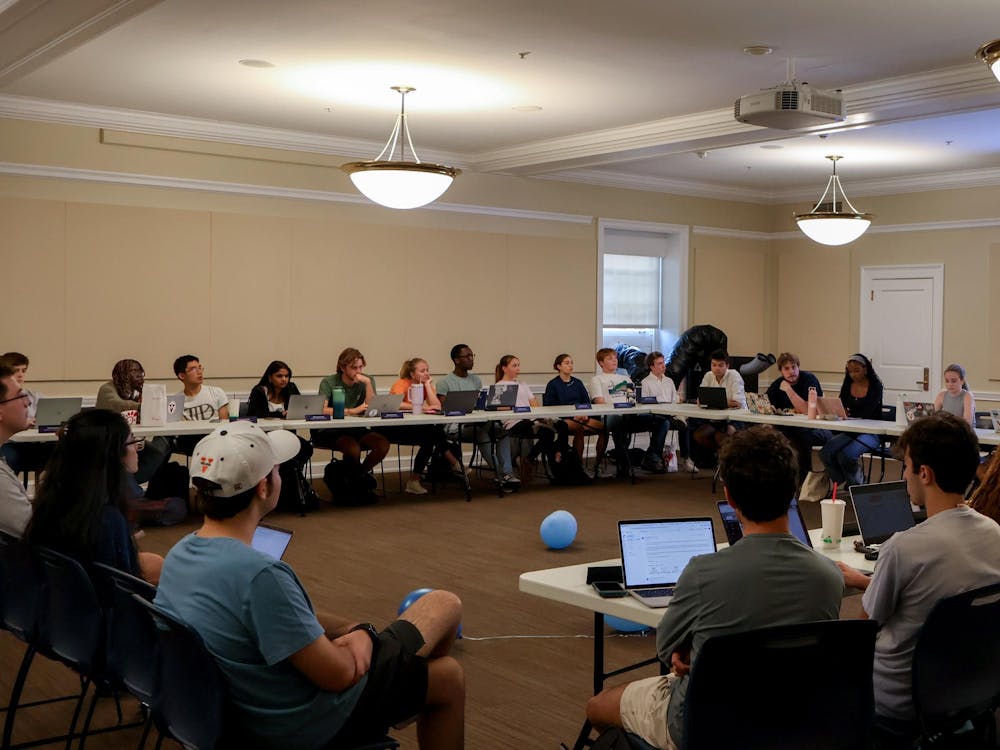University students and administrators are working toward the implementation of gender neutral bathrooms across Grounds, but have met with legal challenges under Title IX.
Gender neutral bathrooms provide a safe and comfortable place for people who identify as transgender or non-binary. For these students, entering single-gender bathrooms can lead to criticism and stigmatization, as well as feelings of discomfort.
Single-stall, gender neutral bathrooms are now present in many buildings around Grounds, including the top floor of Gilmer Hall.
Scott Rheinheimer, coordinator for LGBTQ Student Services, said the University recently introduced interactive maps of new gender-neutral bathrooms around Grounds in order to give students a way to seek out comfortable restroom options.
Rheinheimer said many transgender students consider living in Brown College — which has single-stall bathrooms — or in off-Grounds housing in order to avoid the discomfort associated with using gendered bathrooms.
“The University of Virginia has been working hard to be an inclusive environment, and not only inclusive, but also appreciative of its diversity and its students now and in the future,” Rheinheimer said. “It is in line with the University’s recent admission to include the trans community and be supportive.”
Third-year College student Stephanie Tuck, operations intern for the LGBTQ Center, is in charge of updating the Grounds gender neutral bathroom map on the University’s website.
“As of now, U.Va. is behind most other progressive institutions in terms of establishing accommodations for transgender and gender non-conforming students,” Tuck said.
There are, however, legal constraints to the addition of gender-neutral bathrooms.
“Title IX and Virginia law does not protect against gender-based discrimination, only sex-based discrimination,” Tuck said. “So if a public institution deems bathrooms necessary to [be] segregated according to gender, there is really nothing anyone can legally do about it.”
There are no specific statistics on how many students would directly benefit from the addition of gender neutral bathrooms, Tuck said the lack of statistics should have no bearing on whether or not they are added to the University.
“Transgender and gender non-conforming people face constant discrimination in their daily lives,” Tuck said. “Something as simple as going to the restroom should not be another one of those instances.”
While the installation of gender-neutral bathrooms is a step forward, there is additional work to be done in LGBTQ — specifically transgender — acceptance, Rheinheimer said.
“There is obviously work to be done in respect to trans issues, and it’s not a perfect place yet, but we know this and are working towards meaningful change,” Rheinheimer said.

![<p>Scott Rheinheimer, coordinator for University LGBTQ student services, said such legislation is based on false conceptions of the transgender community. “There is really no evidence around any type of aggression or sexual violence by a trans person in a bathroom,” he said. “There’ve been times when a trans person has been attacked and sexually assaulted, but a trans person [is almost never] the perpetrator.”</p>](https://snworksceo.imgix.net/cav/450a7902-03d2-4095-9b4a-97bc77fe24e2.sized-1000x1000.jpg?w=1000)





